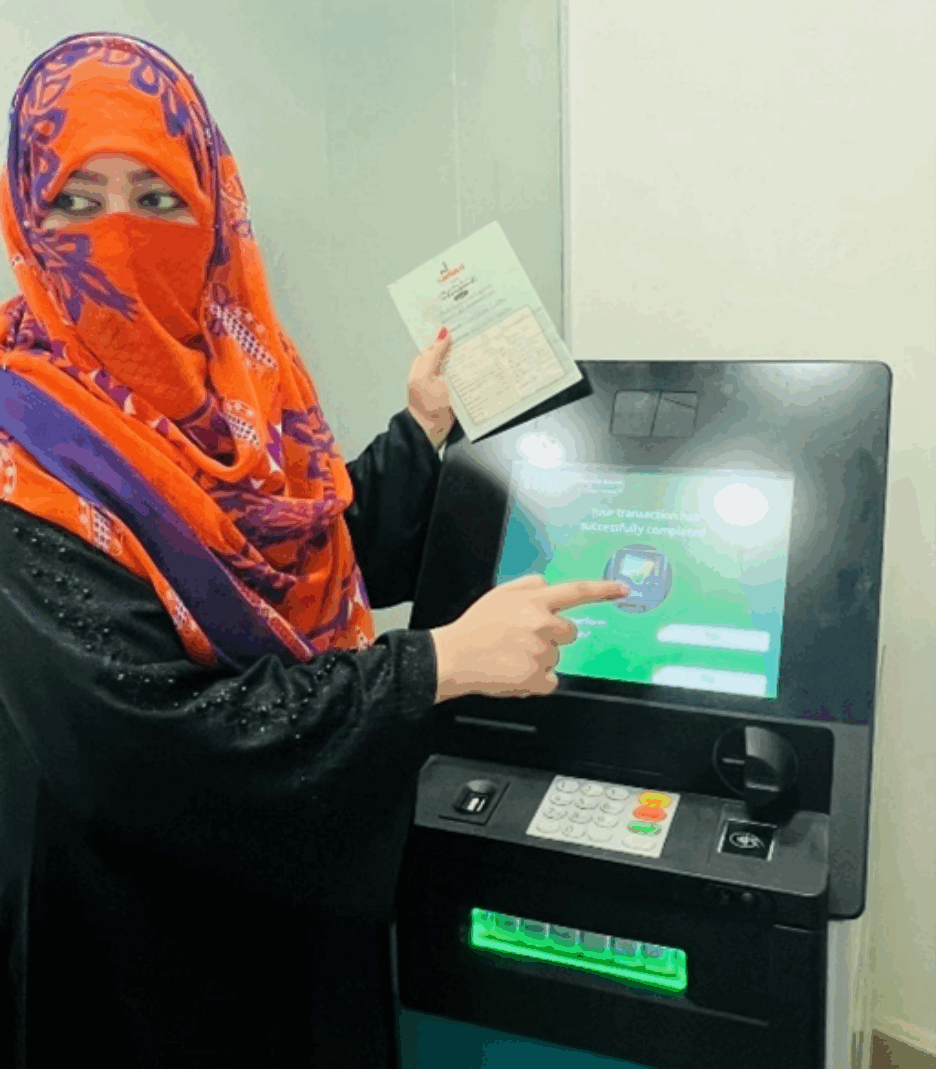Expanding access in social protection delivery: the promise of digital transformation

Written by Melis Guven (Lead Economist, World Bank), Anita Mittal (Lead – Digital Convergence Initiative, GIZ), Veronika Wodsak (Social Protection Policy Specialist, ILO)
This blog was originally published on July 14, 2025 on socialprotection.org.
Even when legislation is in place to provide social protection benefits and financing is available, many people still struggle to access the support to which they are entitled. Barriers appear all along the social protection delivery chain: limited awareness about programs and enrolment processes; burdensome, costly paperwork along with lengthy registration requirements; stigma or discrimination at service delivery points; limited physical access especially for persons with disabilities , women and the poor and vulnerable populations at different touch points across the delivery chain; and little knowledge of complaints mechanisms and/or lack of accessible appeals channels (Lindert et al. 2020).

Towards people-centered service delivery
In recent decades governments have increasingly shifted away from viewing beneficiaries as passive recipients, adopting people-centered, participatory, and responsive service models that rethink the entire social protection delivery chain. Digital technologies sit at the heart of that change (World Bank 2025):
- Breaking access barriers. Digital registration, mobile payments, and online complaints systems reduce costly travel, lost income, and long queues. Interoperability of systems based on open standards significantly reduces the data and document requirements.
- Anonymity and dignity. Online channels lessen the stigma of applying for benefits and can encourage uptake among marginalized groups.
- Better information. Digitally enabled communication – SMS, chatbots, social media –pushes timely and accurate program details, while automated translation and accessibility features widen reach.
- Simplified procedures: Interoperable systems significantly reduce data and document requirements.
What success looks like
When technology is paired with thoughtful design, results are striking:
- In Türkiye, the Bütünleşik Social Assistance Information System leverages interoperability with 30 administrative databases, slashing processing times from 15–20 days to just 1–2 minutes, eliminating the need for 17 paper documents, and collapsing 12 application points into a single ID-based entry point (World Bank 2022a).
- Pakistan transformed its National Socio-Economic Registry from a static to a dynamic system, enabling the Benazir Income Support Programme to identify affected households and deliver emergency benefits within 10 days of the 2022 floods—versus two-month timeframe during COVID-19 under the static registry (Guven et al. 2024).
- In Togo, as a rapid response to the COVID-19 pandemic, the government rapidly rolled out a large-scale cash transfer with mobile money using existing administrative data (Debenedetti 2021).
- In Korea, the Workers’ Compensation and Welfare Service (COMWEL) automated 14 repetitive tasks related to claims processing, speeding decisions and improving accuracy for workers seeking compensation (ILO, 2024).
- Estonia, Hungary, and Norway proactively disburse child benefits: once a newborn is registered in the civil registry, payments start automatically—no application required (OPSI 2019; Eurodfond 2024, and Nav n.d.).
- Azerbaijan blends the Centralized Electronic Information System (CEIS) with citizen-facing DOST centers to grant pensions automatically through real-time data exchange (DCI and socialprotection.org 2024).
- Foundational infrastructure matters too: in India, the fusion of Aadhaar (biometric ID), Jan Dhan Yojana (universal bank accounts), and widespread mobile coverage enables cost-effective, large-scale welfare payments directly into beneficiaries’ accounts (World Bank and GPFI 2018)
Greater inclusiveness is not a guarantee
Yet digital transformation is uneven. Local capacity gaps, weak infrastructure, and limited digital literacy means that women without mobile phones, persons with disabilities navigating non-inclusive platforms, remote communities with patchy connectivity, and many low-literacy users can find that digital systems deepen, rather than bridge, inequalities. Digitalization can also shift administrative burdens to users and lock out those with low skills or connectivity (Madsen 2022). Even Denmark’s mandatory e-services — implemented in a high-tech context–still produced exclusionary effects (Schou and Pors 2018). Algorithmic bias, opaque decision rules, or data breaches can further erode trust if privacy and accountability safeguards are weak. When digital reforms are driven mainly by cost-saving or fraud-control ambitions, they also tend to sideline the beneficiary experience. To mitigate these risks, digital transformation must be approached with deliberate, inclusive design.
Inclusive digital transformation
The digital transformation of social protection delivery needs to be outcome oriented. The only criterion for measuring the performance of delivery mechanisms is the extent to which they help to deliver adequate, comprehensive and sustainable social protection to all members of society in line with national objectives. The following aspects have emerged as good practices to help build such delivery mechanisms:
- Human-centric design. Digital reforms must start with the lived realities of the people they are meant to serve. That means co-creating solutions with diverse end-users—especially women, persons with disabilities, older persons, and remote or low-literacy communities—through user research, journey-mapping workshops, and iterative prototyping. Clear language, intuitive navigation, multiple language options, built-in accessibility features (e.g., screen-reader compatibility or sign-language videos), and offline functionality where connectivity is poor all help ensure that systems are usable by a wide audience, not just the digitally fluent. Artificial intelligence can also be leveraged to provide voice agents or chat bots in local languages, expanding access for users with limited literacy or digital skills (Lindert et al. 2020).
- Multiple channels. No single interface works for all. Apps, web portals, and chatbots should be paired with assisted-digital kiosks, mobile vans, call centers, and community outreach hubs, while paper-based or face-to-face options remain available for those who prefer or need them. These multiple channels approach reduces travel time and costs, lets beneficiaries choose their most convenient entry point, and provides a back-up modality when devices fail, data run out, or users need in-person help to navigate complex processes. For example, Brazil has made concerted efforts to reach excluded populations in remote Amazonian regions through Busca Ativa (active search) strategies. Outreach brigades travel by boat and work with local leaders to identify and register hard-to-reach households previously invisible in the Cadastro Único (Single Registry), demonstrating how proactive, in-person engagement can complement digital systems to ensure inclusion (World Bank 2022b).
- Interoperability – from Silos to Systems to Serve People Better: Interoperability ensures that information can flow securely and consistently across systems and programs. Social-welfare offices, employment services, vital statistics registries, and payment providers can “speak the same language,” reducing duplicate paperwork, speeding eligibility checks, and curbing fraud. To support countries to overcome legal, institutional and technical hurdles to build interoperable systems, the Digital Convergence Initiative (DCI) has published a suite of globally informed, open-source standards tailored to social protection. Governments and developers can adopt and adapt them, accelerating implementation, avoiding vendor lock-in, and laying a scalable, future-proof foundation for integrated service delivery.
- Continuous capacity building. Technology evolves – and so must the people who use it. Front-line staff need regular training in new systems, data-protection protocols, and customer-service skills, while beneficiaries benefit from digital literacy programs that demystify online processes and build confidence. Feedback loops – surveys, helplines, and usability tests – should feed into agile development cycles, so platforms improve over time, rather than stagnate.
- Strong data governance. Interoperability only benefits people if they trust the system. Robust legal and policy frameworks must spell out how personal data are collected, stored, shared, and deleted. These frameworks ensure that individuals give informed consent and have access to clear avenues for correction, redress, and compensation in the event of misuse or breaches. Independent oversight bodies, regular security audits, data-minimization principles, and privacy-by-design practices are all essential to safeguard rights and maintain public confidence.
- Measure equity. “What gets measured gets managed”. Disaggregating usage and outcome data by gender, age, disability status, geography, and income serves to identify who is benefiting and who is being left behind. Combining quantitative dashboards with qualitative users’ insights helps to understand root causes and adjust policies, interfaces, or outreach strategies accordingly. Regular public reporting fosters accountability and keeps equity goals at the center of digital transformation efforts.
The road ahead
Digital transformation is no longer optional; it is an ongoing journey every government must embark on when designing the delivery of public services, including social protection benefits and services. The goal is not technology for its own sake, nor solely cost savings and fraud control. It is to realize the right to social protection for everyone – efficiently, transparently, and with dignity.
Achieving that goal demands inclusive digital transformation that follows the path outlined above. When these elements align, digital tools can strengthen the social contract, rebuild trust in public institutions, and – most importantly – ensure that no one is left behind.
References
Audoin, C. (2024). Nation’s social security innovations earn global recognition. Korea.net. Available at: https://www.korea.net/NewsFocus/Society/view?articleId=262924&utm_source…
Debenedetti, L. (2021). Togo’s Novissi Cash Transfer: Designing and Implementing a Fully Digital Social Assistance Program during COVID-19. Innovations for Poverty Action (IPA). Available at: https://poverty-action.org/sites/default/files/publications/Togo-Novissi…
Digital Convergence Initiative (DCI) and socialprotection.org. (2024). Shaping the Future of Social Digital Services in Azerbaijan webinar. Available at: https://www.youtube.com/watch?v=whI86lVPRzA
Guven, M.; Zaineb,F. and Jamy, G.(2024). The Evolution of Benazir Income Support Programme’s Delivery Systems: Leveraging Digital Technology for Adaptive Social Protection in Pakistan. World Bank. Available et: http://documents.worldbank.org/curated/en/099022924085074880
International Labour Organisation. (ILO). (2024). Recent advances in the digitalization of employment injury insurance administration Evidence from Indonesia, Malaysia and the Republic of Korea. Available at:chrome-extension://efaidnbmnnnibpcajpcglclefindmkaj/https://www.ilo.org/sites/default/files/2024-10/Recent%20advances%20in%2…
Lindert, K.; Karippacheril, T.; Rodriguez, I. and Nishikawa, K. editors. (2020). Sourcebook on the Foundations of Social Protection Delivery Systems. World Bank. Available at: https://openknowledge.worldbank.org/entities/publication/c44dc506-72dd-5…
Madsen, C.; Lindgren, I. and Melin, U. (2022). The accidental caseworker – How digital self-service influences citizens’ administrative burden. Government Information Quarterly. Volume 39, Issue 1, January 2022, 101653. Available at: https://www.sciencedirect.com/science/article/pii/S0740624X21000897
Norwegian Labour and Welfare Administration (Nav). (n.d.). Child Benefit. Available at: https://www.nav.no/barnetrygd/en
Observatory of Public Sector Innovation (OPSI). (n.d.). Pro-Active Family Benefits. Available at: https://oecd-opsi.org/innovations/proactive-family-benefits/?utm_source
Schou, J; Pors, A. (2019). Digital by default? A qualitative study of exclusion in digitalised welfare. Social Policy & Administration. 53: 464–477. Available at: https://doi.org/10.1111/spol.12470
World Bank and Global Partnership for Financial Inclusion (GPFI). (2018). G20 Digital Identity Onboarding. Available at: https://documents1.worldbank.org/curated/en/362991536649062411/pdf/12986…
World Bank. (2022a). Deep Dive into the Ecosystem for the Delivery of Social Assistance Payments. Türkiye Case Study). Available at: https://documents.worldbank.org/en/publication/documents-reports/documen…
World Bank. (2022b). Social Protection for the Brazil of the Future. Preparing for Change with Inclusion and Resilience. Available at: https://documents1.worldbank.org/curated/en/099041823131543914/pdf/P1748360cee7150e30857b06a0e80ada814.pdf?utm_source=chatgpt.com
World Bank. (2025a). From Promise to Productivity; Making Digital Work for People and Jobs. World Bank. Available at: https://documents1.worldbank.org/curated/en/099062525142534658/pdf/P5043…
World Bank. (2025b). State of Social Protection Report 2025: The 2-Billion-Person Challenge. Available at: https://openknowledge.worldbank.org/server/api/core/bitstreams/3a191516-…